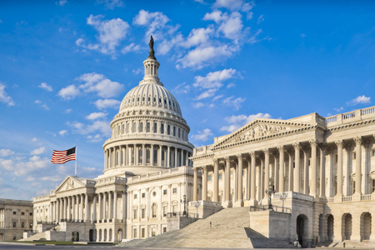8 Key Takeaways Of The Proposed FDA Modernization Act 3.0

On Feb. 6, 2024, new legislation was introduced in the House of Representatives, called the FDA Modernization Act 3.0. This proposed legislation aims to reduce and replace the use of animals in nonclinical research, improve predictivity of nonclinical testing, and potentially reduce development times for drugs.
Please note that this is legislation has been introduced in Congress and needs to go through its course of passing the House and Senate and being signed by the president before becoming a law. This article provides background on and a summary of the legislation.
Background
Developmental drugs go through the preclinical and clinical trials process. The preclinical trial process involves testing the developmental drug product in animals to get an indication of the drug’s safety and efficacy. All developmental drugs go through this process prior to clinical trials that involve human subjects. Several types of animals are used in preclinical testing, including rats, mice, beagles, and even monkeys. The preclinical trials process has been under scrutiny by various animal welfare associations. One of the contentions from the animal welfare groups is that the behavior of a drug in animal models doesn’t necessarily correlate with its behavior in humans, and a significant percentage of developmental drugs fail in human clinical trials. So, the use of animals under such high failure rates has been criticized, leading to a call for better testing models and limiting the use of animals in preclinical trials. Coming up with better nonclinical testing models also could potentially reduce drug development timelines.
Key Points Of The Proposed FDA Modernization Act 3.0
- Establishment of a nonclinical testing process — The proposed legislation directs the Secretary of Health and Human Services to establish a qualification process for nonclinical testing method, under which an entity/person may request qualification of a nonclinical testing method. The Secretary has the right to grant or deny such requests.
- Eligibility for qualification — To be eligible for qualification, a nonclinical testing method must aim to replace or reduce animal testing and either improve the predictivity of nonclinical testing or reduce the development time for drugs.
- Qualification process for nonclinical testing methods:
- Process to invite submission — The Secretary of HHS is to establish a process to invite submissions for the qualification of nonclinical testing methods.
- Guidance on submission content — At a minimum, the content should demonstrate the eligibility criteria: to replace or reduce animal testing and either improve the predictivity of nonclinical testing or reduce development time for drugs.
- Review of the submission — Using its senior managers and experienced staff, the FDA will review the information submitted and provide feedback. The FDA also can engage with external experts in its review of the submission.
- Adjudication and timelines — Based on the information in the submission, along with information provided by FDA and external experts, the Secretary can accept or deny the request for a nonclinical testing method. The adjudication should take no more than 180 days from the date of submission.
- Effect of successful qualification — If a nonclinical testing method is qualified, it becomes available for use in drug development within the specified context. The FDA will expedite the review of applications that use qualified methods and allow applicants to reference the qualification in their submissions.
- Reporting — The Secretary is directed to publish annual reports on the FDA’s website evaluating the qualification process, including the types of methods qualified, the number of requests granted, review timelines, and the impact on animal use reduction.
- Public meeting — Not later than 180 days after the legislation's enactment, the Secretary must announce a public meeting through the Federal Register. The purpose of this meeting is to gather input and recommendations from various stakeholders, including regulated industry, biomedical consortia, contract research organizations, and patients.
- FDA guidance development — The Secretary of Health and Human Services, through the Commissioner of Food and Drugs, must propose guidance on the goals and implementation of the process through the proposed bill’s amendment to section 507A of the Federal Food, Drug, and Cosmetic Act within one year of the public meeting. This proposed guidance must then undergo a public comment period. The guidance must cover several key aspects, including:
- the procedure for requesting qualification,
- eligibility criteria,
- information required from individuals seeking qualification, and
- the evaluation process that the Secretary will use for requests.
Please note that this legislation is not currently law and may not become a law unless it successfully proceeds through the law making process.
About The Author:

Rajendran (Raj) Arunagiri has been in the pharma industry for a decade and has successfully developed and launched a new excipient. He is a co-author of technical articles and is an invited speaker at conferences focused on excipients and drug delivery. He specializes in the area of poorly soluble APIs and modified release. Arunagiri welcomes you to reach out to him for questions, comments, and collaboration ideas at raj.gceb@gmail.com.
